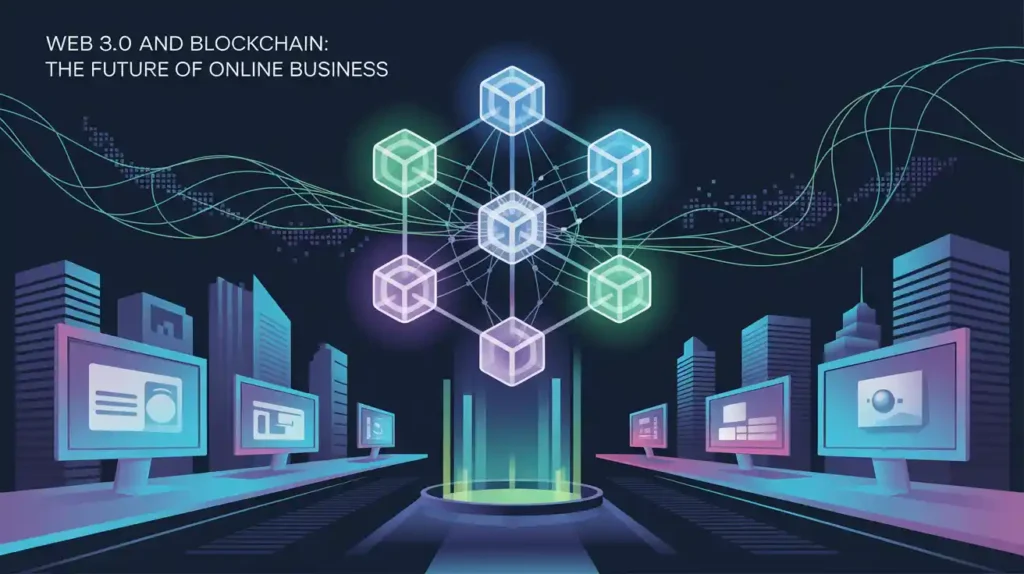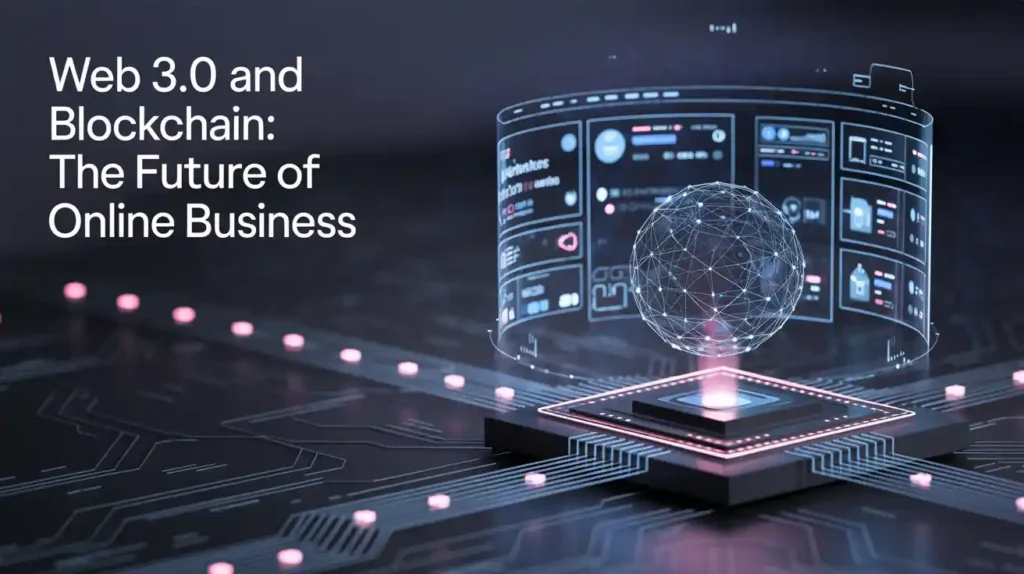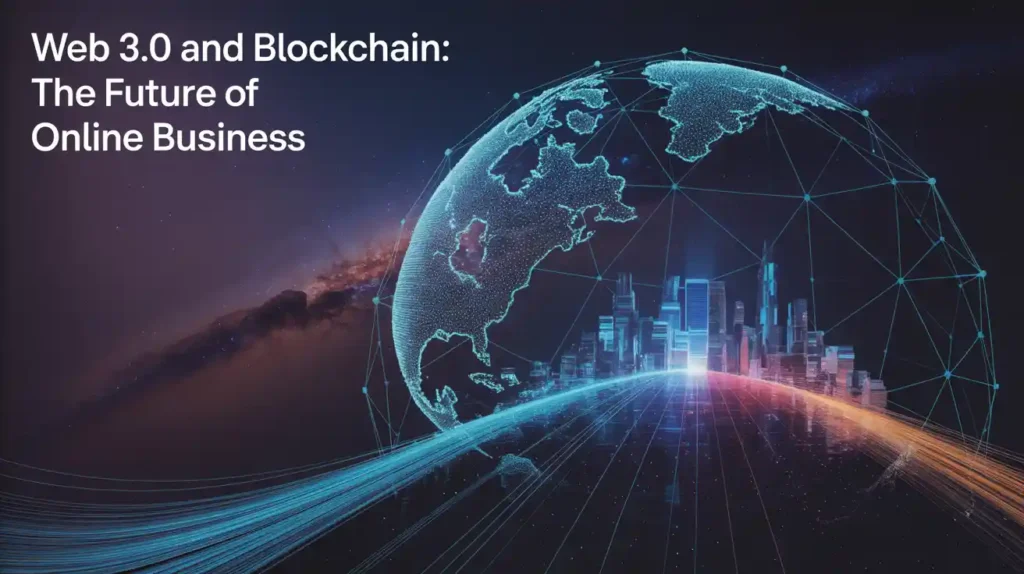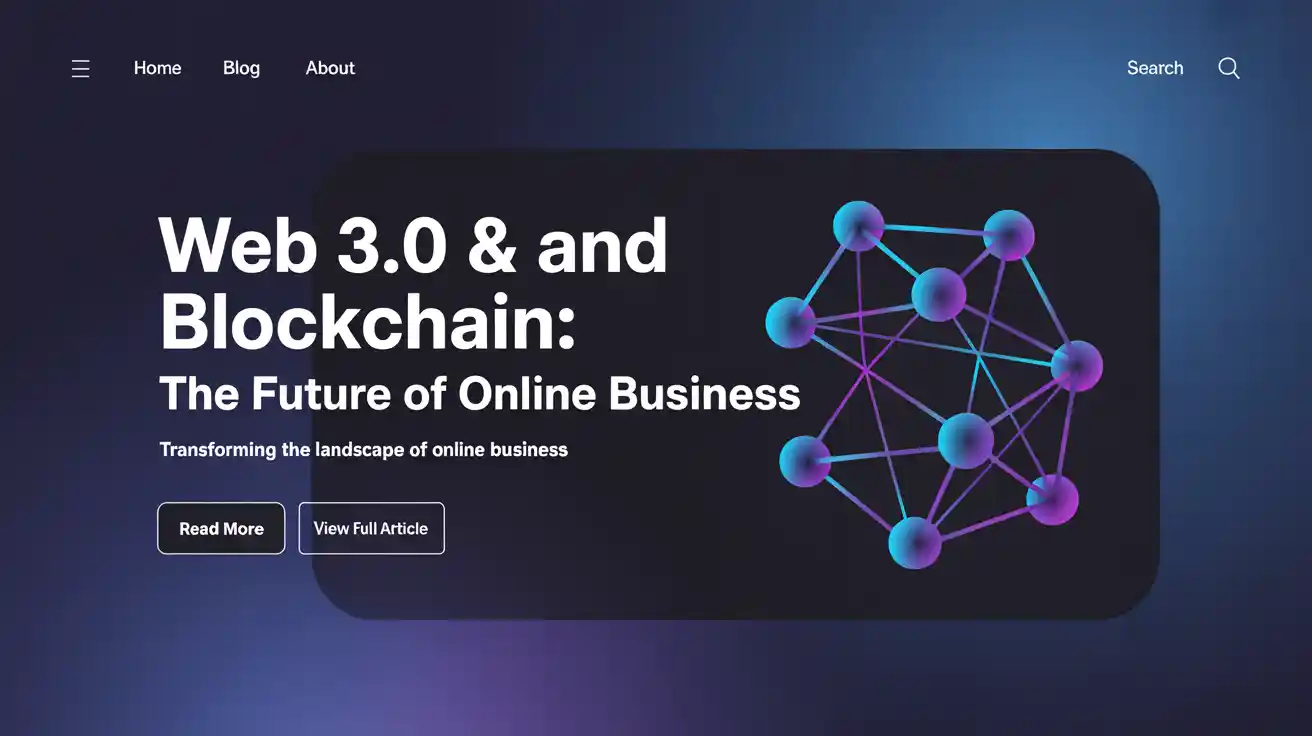The internet is evolving. We’ve journeyed from static websites (Web 1.0) to dynamic, user-driven content (Web 2.0). Now, we stand at the threshold of Web 3.0—a decentralized, transparent, and user-empowered version of the web that promises to transform how online businesses operate. Central to this evolution is blockchain technology, which underpins many of Web 3.0’s most revolutionary features.
In this blog post, we’ll explore how Web 3.0 and blockchain are reshaping the future of online business, the key technologies driving this shift, the benefits and challenges, and what entrepreneurs and organizations need to know to thrive in this new digital era.
What Is Web 3.0?
Web 3.0 refers to the third generation of internet services, characterized by decentralization, semantic understanding, artificial intelligence, and enhanced user control. Unlike Web 2.0—which is dominated by centralized platforms like Google, Facebook, and Amazon—Web 3.0 aims to give users ownership of their data and digital identities.
Key features of Web 3.0 include:
- Decentralization: Data is stored across multiple nodes rather than controlled by central servers.
- Blockchain Integration: Provides a trustless, immutable, and transparent infrastructure.
- Tokenization: Enables new business models through cryptocurrencies and NFTs.
- Interoperability: Apps and platforms can seamlessly interact across blockchains and systems.
- Privacy and Ownership: Users control their data, digital assets, and identities.
ALSO CHECK: How AI Is Revolutionizing Cybersecurity in 2025

Understanding Blockchain’s Role in Web 3.0
Blockchain is the foundational technology of Web 3.0. It’s a distributed ledger system that records transactions across a network of computers. Because each transaction is verified and stored across all nodes, blockchain ensures transparency, security, and immutability.
Blockchain enables the creation of decentralized applications (dApps), smart contracts, and decentralized autonomous organizations (DAOs), all of which are transforming how businesses operate online.
Let’s look at some specific ways blockchain empowers Web 3.0:
- Smart Contracts: Self-executing contracts that automatically enforce rules and agreements.
- Digital Identity Management: Users have control over their identity without relying on third parties.
- Token Economies: Businesses can create tokens that represent value, rights, or access.
- Provenance and Supply Chains: Track the origin and journey of products with blockchain transparency.
Web 3.0 and the Transformation of Online Business
1. New Business Models
Web 3.0 is giving rise to entirely new business models. With token economies, companies can issue their own cryptocurrencies to fund development, reward users, and incentivize behaviors. Startups can raise capital through Initial Coin Offerings (ICOs) or Security Token Offerings (STOs) without traditional intermediaries.
Examples include:
- Play-to-Earn (P2E) Games – Players earn cryptocurrency by participating.
- Creator Economy Platforms – Artists and influencers monetize directly through NFTs or token-gated content.
- Decentralized Marketplaces – Peer-to-peer platforms for goods and services that bypass centralized middlemen.
2. User Ownership and Incentives
Web 2.0 businesses profit from user-generated content while retaining full ownership. In contrast, Web 3.0 platforms reward users for their contributions. For example:
- Brave Browser rewards users with BAT (Basic Attention Token) for viewing ads.
- Steemit pays users in cryptocurrency for blogging.
- Audius lets musicians retain ownership and earn directly from fans.
This shift empowers users and creates a more equitable online economy.

3. Decentralized Finance (DeFi)
DeFi is revolutionizing online financial services by providing decentralized alternatives to banks, brokers, and payment processors. Through DeFi platforms built on Ethereum and other blockchains, users can:
- Lend or borrow funds without intermediaries
- Earn interest via liquidity pools
- Trade crypto assets peer-to-peer
Online businesses can use DeFi protocols for treasury management, payroll, payments, and international transfers—often at lower cost and with fewer barriers.
4. Supply Chain Transparency
For eCommerce and product-based businesses, blockchain can provide full transparency and traceability in supply chains. Consumers can verify:
- Where products come from
- Whether goods are authentic
- If ethical practices were followed
Luxury brands, food producers, and manufacturers are already leveraging blockchain to boost trust and prevent fraud.
5. Enhanced Security and Privacy
Web 3.0 uses cryptographic technology and decentralized networks to reduce the risks of hacks, breaches, and data manipulation. With zero-knowledge proofs, users can prove their identity or eligibility without revealing private data.
This approach minimizes the need for storing personal information on centralized servers—offering a more secure alternative for businesses that handle sensitive customer data.
Benefits of Web 3.0 for Businesses
- Lower Costs: Fewer intermediaries and automation through smart contracts reduce operational expenses.
- Increased Trust: Transparency through public ledgers builds consumer confidence.
- Global Reach: Cryptocurrencies and dApps can operate across borders without the need for traditional infrastructure.
- Resilience: Decentralized systems are less prone to single points of failure.
- Data Ownership: Gives businesses and customers better control and monetization of data.
Challenges and Considerations
⚠️ Regulatory Uncertainty
One of the biggest hurdles facing Web 3.0 businesses is regulation. Cryptocurrency and blockchain laws vary greatly by country and are constantly evolving. Businesses must navigate:
- Securities regulations for tokens
- Tax implications of crypto transactions
- Compliance with anti-money laundering (AML) laws
⚠️ Scalability Issues
Many blockchains struggle to handle high volumes of transactions efficiently. Solutions like Layer 2 scaling (e.g., Polygon, Arbitrum) and alternative blockchains (e.g., Solana, Avalanche) are being developed, but scalability remains a concern for mass adoption.
⚠️ User Experience
The decentralized web still lacks the smooth, intuitive UX of Web 2.0 platforms. Setting up wallets, managing keys, and understanding smart contracts can be daunting for non-technical users.
⚠️ Security Risks
While blockchain offers enhanced security, it’s not immune to threats. Smart contract bugs, rug pulls, and phishing scams are common in the space. Businesses must invest in auditing and cybersecurity best practices.

Real-World Examples of Web 3.0 Businesses
- OpenSea: A leading NFT marketplace for creators and collectors.
- Uniswap: A decentralized exchange (DEX) allowing users to trade tokens without an intermediary.
- Mirror.xyz: A Web 3.0 publishing platform where writers monetize their work with crypto.
- Chainlink: A decentralized oracle network connecting smart contracts to real-world data.
These examples show the diversity of use cases and how businesses are innovating on Web 3.0 principles.
How Businesses Can Prepare for Web 3.0
To stay competitive, online businesses should begin exploring and integrating Web 3.0 technologies:
- Educate Your Team: Understand blockchain, smart contracts, and tokenomics.
- Experiment with dApps: Use existing decentralized tools to understand the ecosystem.
- Build on Web 3.0 Platforms: Consider creating decentralized components of your service.
- Tokenize Products or Services: Explore NFTs or loyalty tokens to increase engagement.
- Adopt Crypto Payments: Accepting digital currencies can open new markets.
Early adoption can offer a strategic edge and unlock innovative revenue streams.
The Future Is Decentralized
Web 3.0 and blockchain are more than buzzwords—they represent a fundamental shift in how we build, operate, and interact online. For businesses, the implications are profound: new revenue models, deeper user engagement, stronger trust, and global accessibility.
While challenges remain, the potential rewards are too significant to ignore. As the decentralized web matures, those who embrace it early will help shape the future of digital commerce.


1 thought on “Web 3.0 and Blockchain: The Future of Online Business”